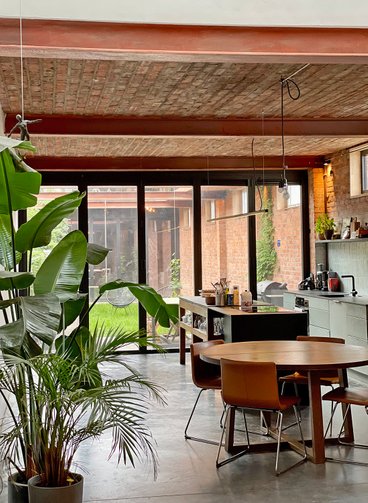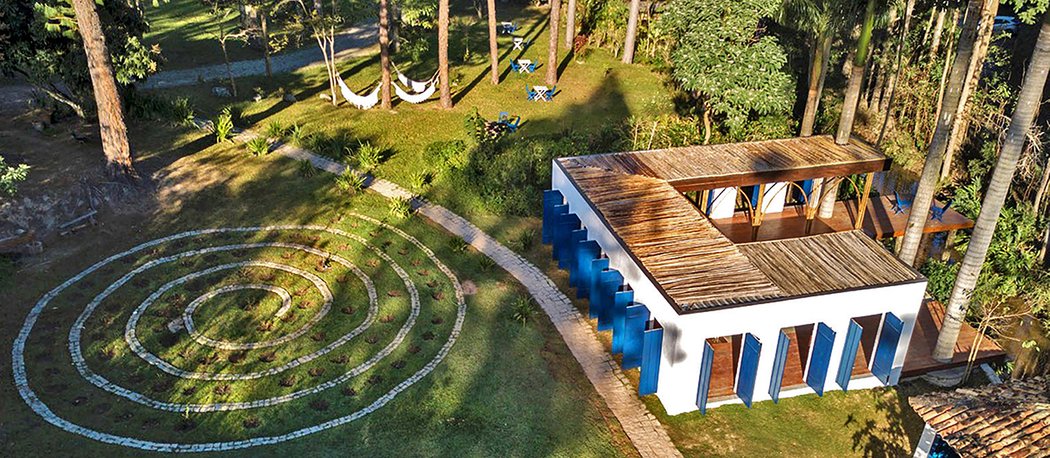FAQ
CRU! Architects
Does CRU! Architects only focus on bamboo or earth architecture?
Although CRU! Architects is specialized in bamboo and rammed earth architecture, we are not limited to these specific construction methods. From modest city houses to urban planning, we are eager to contribute our expertise and passion, even when bamboo is not part of the equation. Our goal remains to create beautiful living spaces, irrespective of the building materials involved.
Is affordable building still possible?
Affordable building has become increasingly important in recent years, with fluctuating material prices as a significant challenge. Our primary objective is to implement construction materials and methods that are not only cost-effective but also highly durable. Furthermore, we are committed to a sustainable approach that emphasizes reusing materials whenever possible.

What is your approach?
Our approach always starts with the client's vision. What are your housing preferences, how do you envision living in your home? This is an unique experience for everyone. Based on this, we develop two preliminary designs. These designs are presented to the client whereafter refined into a final design. We create a 3D visualization of every design, providing the client with a clear understanding of how the concept comes together. Then we create a detailed cost estimation and submit the application for the building permit. During the waiting period for permit approval, we begin preparing an execution dossier and obtain price quotes from several contractors. This proactive approach allows us to expedite the construction process once the permit is granted. In terms of contractors, we offer flexibility. While we have a network of trusted contractors, clients are also welcome to bring their preferred contractor to the project. In either case, once construction begins, we oversee the progress and ensure that the project is executed according to the approved plans.
How long does the entire process take?
From the initial introductory meeting, through the design phase, permit applications, the construction, and finally moving into the house... It's a comprehensive process with legally defined timelines for permit applications. Count about 90 to 120 days for the permits and another 30 days for the mandatory display of the permit application. All together, you can expect approximately 1 to 2 years from the initial introductory meeting to the completion of the project. This duration is often underestimated. Therefore, having a good connection with your architect is essential because you will be working together for a long time.
What is your costprice as architect?
As with any profession, the cost of an architect varies from one architect to another. The architect's fee is also influenced by several factors, such as the complexity of the project, the size of the house, whether you merely engage us for the basics (waterproof and structural work) or for the complete (interior) finishing, and finally whether you might be building or renovating your home by yourself or with a contractor. At CRU, we are committed to ensuring affordability while delivering high-quality results. We are happy to provide you with a non-binding quote for your specific construction or renovation project.

bamboo architecture
Can you build with bamboo in Europe or Belgium?
Bamboo is an exceptionally suitable construction material in Europe, where it thrives due to the absence of natural adversaries and milder weather conditions compared to tropical regions. Our track record includes the construction of a bamboo house in Ghent in 2010, where the bamboo poles used in the roof structures remain in impeccable condition. In another project in Moerbeke, bamboo was used structurally within hempcrete walls to expand a house, demonstrating its versatility. We are currently involved in a remarkable project at the Planckendael Zoo in Mechelen, where we are erecting a 25-meter high bamboo tower. For this venture, both the bamboo poles and the structural elements have undergone rigorous calculations and testing by Studiebureau Mouton and the University of Ghent, ensuring their reliability and safety.
In both Belgium and the Netherlands, there is a network of wholesalers offering a wide range of bamboo products, from bamboo poles of various sizes to laminated bamboo panels, such as BambooImport. However, the primary challenge lies in finding a contractor willing to embrace bamboo. If you are intrigued by the possibilities of bamboo construction, we can assist you in locating a skilled contractor who is enthusiastic about using bamboo in their projects. Additionally, we can provide hands-on guidance and explanations for those interested in venturing into bamboo construction themselves.
Is it more expensive and less ecological to build with bamboo in Europe, considering the transport from the tropics?
When considering the ecological and cost aspects of building with bamboo, it's important to note that bamboo is a highly sustainable construction material. Bamboo used in construction typically originates from either Colombia or China/Japan and is transported by sea. The ecological impact of this transportation is comparable to that of timber sourced from Canada or Scandinavian countries. However, it's essential to avoid framing the discussion in terms of "more or less ecological" because bamboo stands out as one of the most environmentally friendly construction materials, even when considering transport.
If you are interested in further exploring the ecological impact of bamboo in construction, we can provide you with several Life Cycle Assessment (LCA) studies on the topic.
In terms of cost, it's true that building with bamboo is more expensive compared to materials like timber. It is however essential to consider the long-term benefits and sustainability that bamboo offers, which can outweigh the initial cost difference. Additionally, bamboo's unique properties, such as rapid growth and durability, make it a compelling choice for those looking to invest in a sustainable and resilient building material.
What are the benefits of building with bamboo?
Building with bamboo offers several significant benefits. Firstly, bamboo is an exceptionally sustainable material due to its rapid growth, which allows for quick replenishment. It can be harvested in just three to five years, making it an eco-friendly alternative to traditional timber which requires much longer growth periods. There are several new bamboo plantations in Europe as well such as BambooLogic.
Secondly, bamboo has the ability to absorb 12-35kg of CO2 per square meter of bamboo forest per year compared to mature trees that absorb about 10kg of CO2 per tree. As it is incorporated into structures, bamboo continues to store carbon for the lifespan of the building. Compared to conventional building materials like concrete and steel, which are carbon-intensive due to their manufacturing processes, bamboo represents a low-impact alternative. Choosing bamboo reduces the overall carbon emissions associated with construction.
Furthermore, bamboo is incredibly strong and lightweight, making it an excellent choice for construction. Its tensile strength can even rival that of steel, making it suitable for a wide range of structural applications. In terms of versatility, bamboo can be used for various purposes, from structural elements to flooring, walls, and decorative finishes, adding to its appeal. Lastly, building with bamboo supports local communities in regions where it is abundant, promoting economic development and providing sustainable livelihoods.
Overall, bamboo construction is a sustainable, strong, and versatile choice that aligns with environmental and social responsibility while actively contributing to a reduced carbon footprint.
FAQ